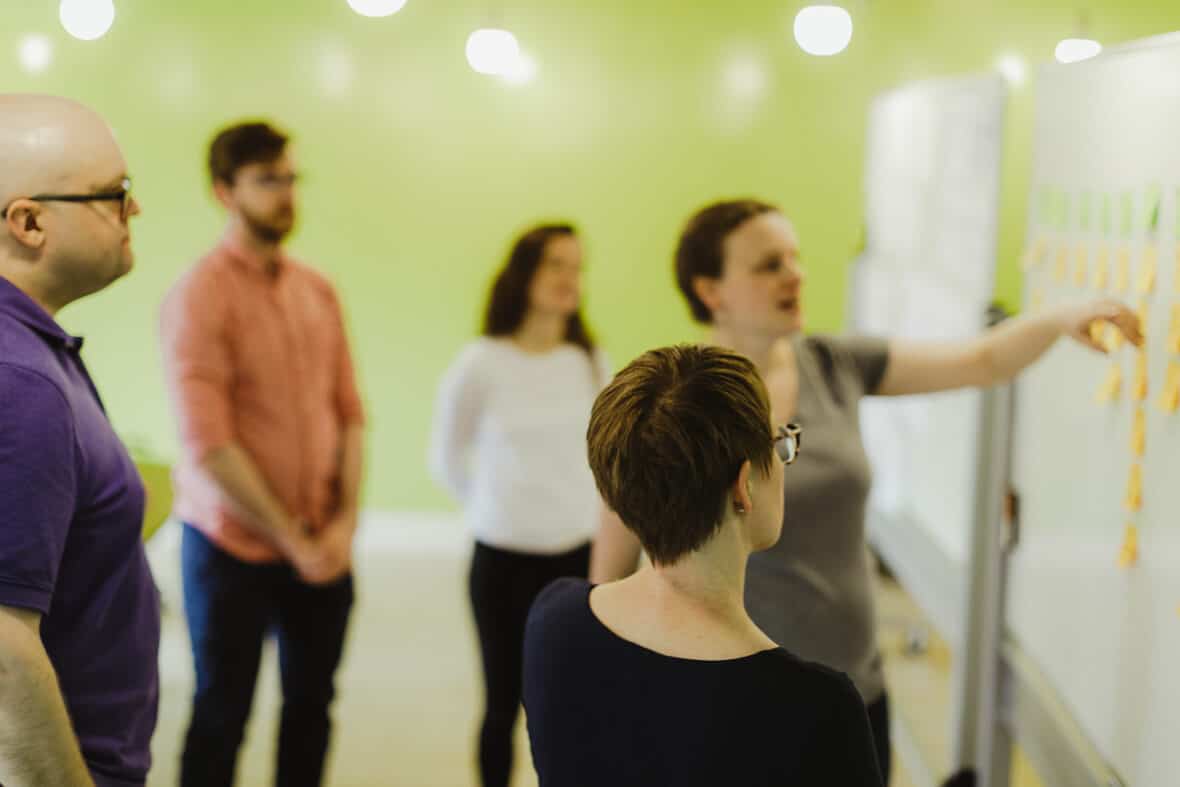When you start incorporating design thinking into a business, you usually bring more than practices. Why? The methods of design thinking are rooted in collaboration, out-of-the-box thinking, and taking measured risks. And at some companies, these attitudes are downplayed, or even outright discouraged.
Bringing design thinking into a company like this can be very challenging. Which had me wondering, “What if we could adapt our design thinking methods to the unique cultural dimensions of the team we’re working with?”
If we succeed, we could build alignment and make progress with less tension, friction, or miscommunication along the way. We could get more done, and we’d probably have more success at helping the team explore new ways of working.
What are Cultural Dimensions?
By cultural dimensions, I don’t mean the values that teams adopt like “Act Transparently” or “People over Process.” While these have their place, I’m referring to the ten Cultural Values (or “basic tendencies in the way that people prefer to work and live”) defined by the Cultural Intelligence Center:
- Individualism/Collectivism
- Power Distance
- Uncertainty Avoidance
- Cooperative/Competitive
- Time Orientation
- Context (Direct/Indirect)
- Being/Doing
- Universalism/Particularism
- Expressiveness
- Focus (Monochronic/Polychronic)
Being/Doing, for example, describes how much a person or culture values quality of life (Being) versus proactively working toward goals (Doing). No value is good or bad, and they can vary wildly between different cultures, companies, and people.
I learned about this language/tool last year when Atomic engaged with the Cultural Intelligence Center and Mary DeYoung of Gray Space Collaborative to study our own cultural values and cultural intelligence. It’s helped me understand other people’s actions and build better, more authentic relationships.
Design Thinking Methods => Cultural Dimensions
As mentioned at the top of this post, I believe design thinking as a general approach maps to a few key cultural dimensions.
- Low Power Distance – Level the playing field so managers and makers contribute equally. All ideas are captured on a 3×3 sticky note and prioritized without regard for who wrote them.
- Low Uncertainty Avoidance – Identify a bunch of opportunities and prototype them. Gather information as we progress and adapt to changing circumstances as needed, or when concepts fail.
- Cooperative – Everyone leans into the challenge and the outcomes are shared. In fact, it is too blurry to say whose idea it was. The solution is the result of full team participation.
But what if we try to embed these mindsets within a team that operates near the other end of each cultural value dimension? Some teams function best using a proven chain of command. Some couldn’t imagine starting something new without a documented proposal and a list of similar initiatives that were successful. Some teams thrive because of their shared competition.
Adapting Design Thinking to Different Values
The question of who should adapt to who is tricky to answer and will depend on several factors. But should the situation call for adapting the design thinking methods for the team, here are a few examples to get the gears turning.
High Power Distance
- Have the team lead define the challenge or goal from the beginning. This allows the team to contribute with confidence that it aligns with the leaders’ vision.
- Collect ideas from the group. Have the team lead or product owner make an executive pass, ‘upvoting’ the concepts they’re most intrigued with and why (this also works for the competitive value).
High Uncertainty Avoidance
- Use real examples of current situations as a test for a newly mapped process. Consider a ‘happy path’ example and more than a few wacky edge cases.
- Sketch out smaller phases of the feature or mini-milestones to discuss what has to come first. Outcomes include purpose statements of what the team wants to accomplish at each phase.
Competitive
- Set your sight on a lofty goal. How might the success of this feature or project impact more broadly? This could be personal, team, project, or business-oriented goals. For example, success could mean influence, bringing like-minded people together, or recognition from a supervisor.
When adapting methods to the team, participants lean into the work. Each person engages in critical thinking and what-if mindsets! As a follow-up, survey attendees to see how the workshop was perceived and what went well.
These are just a few examples that I hope will inspire a new perspective of your own team. It never hurts to expand our toolbox of Design Thinking Methods and facilitation techniques.

